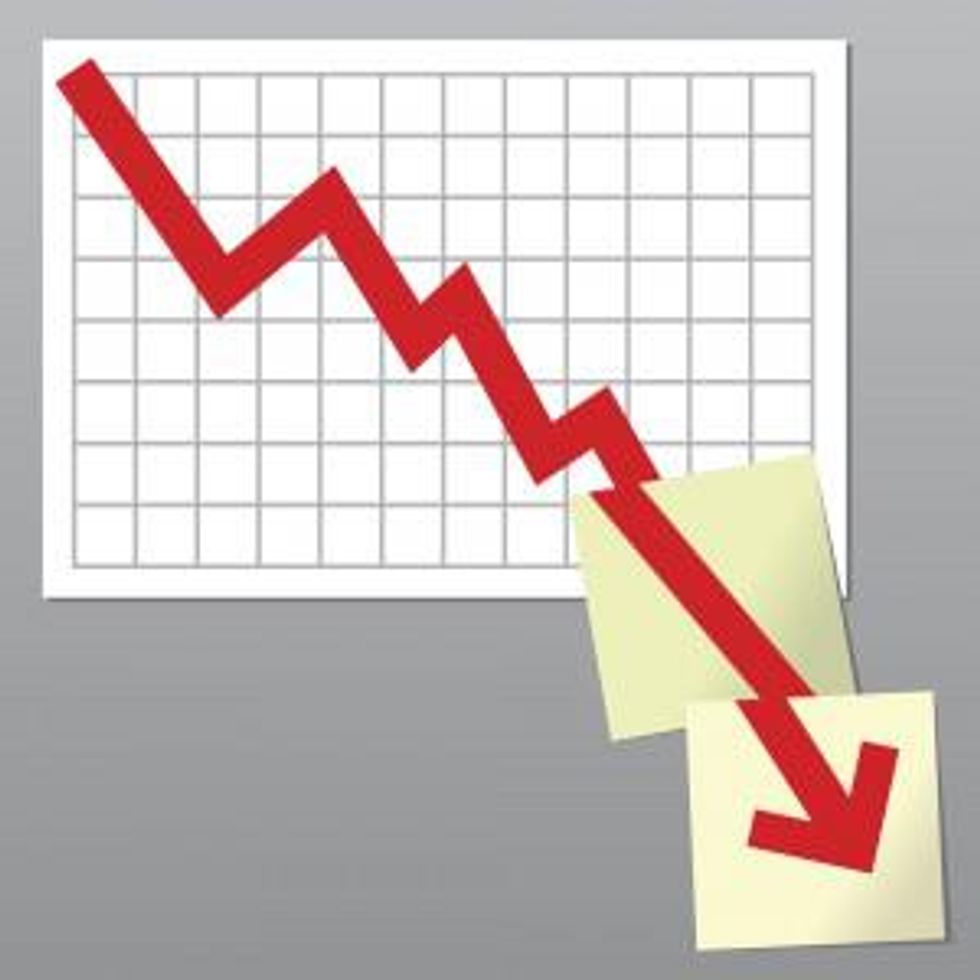Bulls best hope that bears are tired because there is danger on the charts.
Gold investors, be advised that warnings of danger on the charts are circulating. Market participants with their eyes on the technicals are bracing for potentially steep price declines as gold approaches the death cross.
Many gold market participants are fundamental investors and are not overly bothered by technical assessments. But many of those who do make moves based on technical indicators deem the death cross very significant.
The term “death cross” refers to the point when a short-term trend line falls below a longer-term trend line. In gold’s case, the concern is that the metal’s 50-day moving average will drop below its 200-day moving average.
This type of movement is considered highly indicative of negative sentiment, and therefore is also thought to point to a bearish market. It is also viewed as a sell trigger that could cause currently weak gold prices to become even weaker.
In a recent Wall Street Journal article, OCBC Bank analyst Barnabas Gan warned that should a death cross occur, gold may fall toward $1,550 an ounce.
Gold came under severe pressure last week, declining 3.4 percent, according to Bloomberg. Fain Schaffer of Infinity Trading believes that the metal could plummet another 4.4 percent from Friday’s COMEX settlement price of $1,609 in the event of a death cross. Gold futures could slump to $1,538, Schaffer was quoted as saying by Bloomberg.
There is history to support these forecasts for declines. A death cross occurred last April and gold prices fell over 9 percent in the month that followed, while a 2008 crossover was followed by an 18-percent decline in the following eight weeks.
On Tuesday, TD Securities said that the gold market is currently drawing ever closer to yet another death cross.
While technical talk is on the agenda, stop-loss orders and stop hunting are a couple more terms that gold investors may want to get familiar with; they could become very relevant given the state of the market.
Stop-loss orders are automated triggers to sell. A decision is made to exit the market when the price hits a certain point and computers are left to monitor the market and execute that command. Not only are stop-loss orders commonly used, but they tend to be clumped around key technical areas.
Stop hunters are market participants who seek out concentrations of these market orders and then attempt to trigger them. Like a domino effect, the automated selling can lead to price declines that trigger more selling and greater declines. The stop hunters then get the opportunity to profit from falling prices.
On Friday, for the first time in six months, gold prices fell below $1,600. Once the market got around the $1,600 level, it was the triggering of stops that led gold to the day’s low of $1,597, according to Scotiabank.
Gold has since managed to rise back above $1,600, but the market remains fragile and stop hunters may pose a risk. On Tuesday, gold initially saw a bounce that was mostly attributed to bargain hunting and short covering, but the momentum quickly faded and selling pressure saw gold post a low for the day of $1,599.
“Gold bulls do not want to see Friday’s daily low of $1,596.70 breached. A significant number of sell stop orders likely reside just below that level, which if triggered would ignite a new wave of technical selling pressure,” warned Kitco’s Jim Wyckoff.
Given the heavy selling and losses on Friday, the gold market is now overextended, Kira Brecht wrote in a Kitco technical trading article. Bears are tired and in need of some rest, she said. But she ended with a warning: there is an absence of strong nearby technical support. If bears do pressure gold below $1,596, the market will continue to unfold lower and they will target the $1,530/$1,525 level.
Securities Disclosure: I, Michelle Smith, do not hold equity interests in any companies mentioned in this article.





